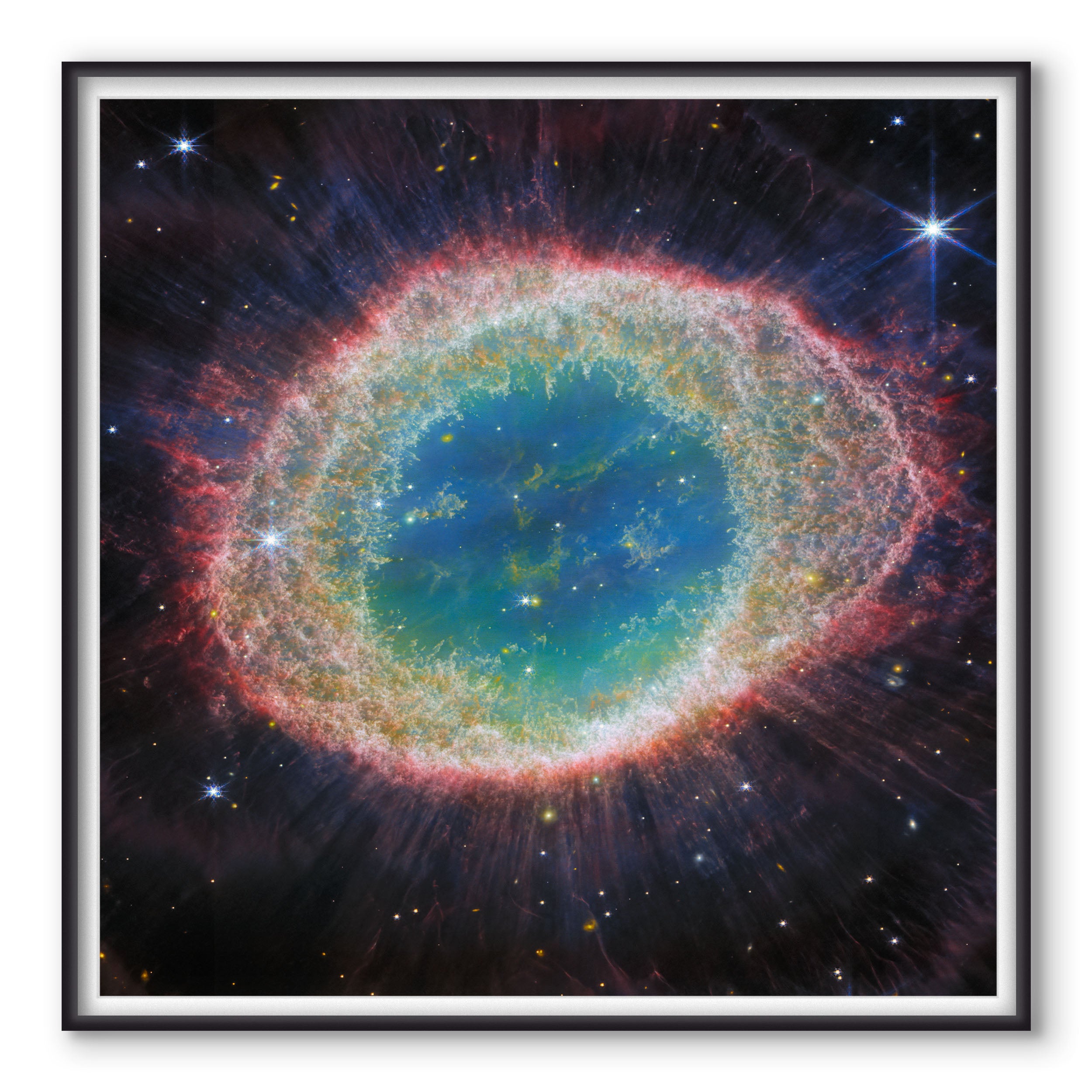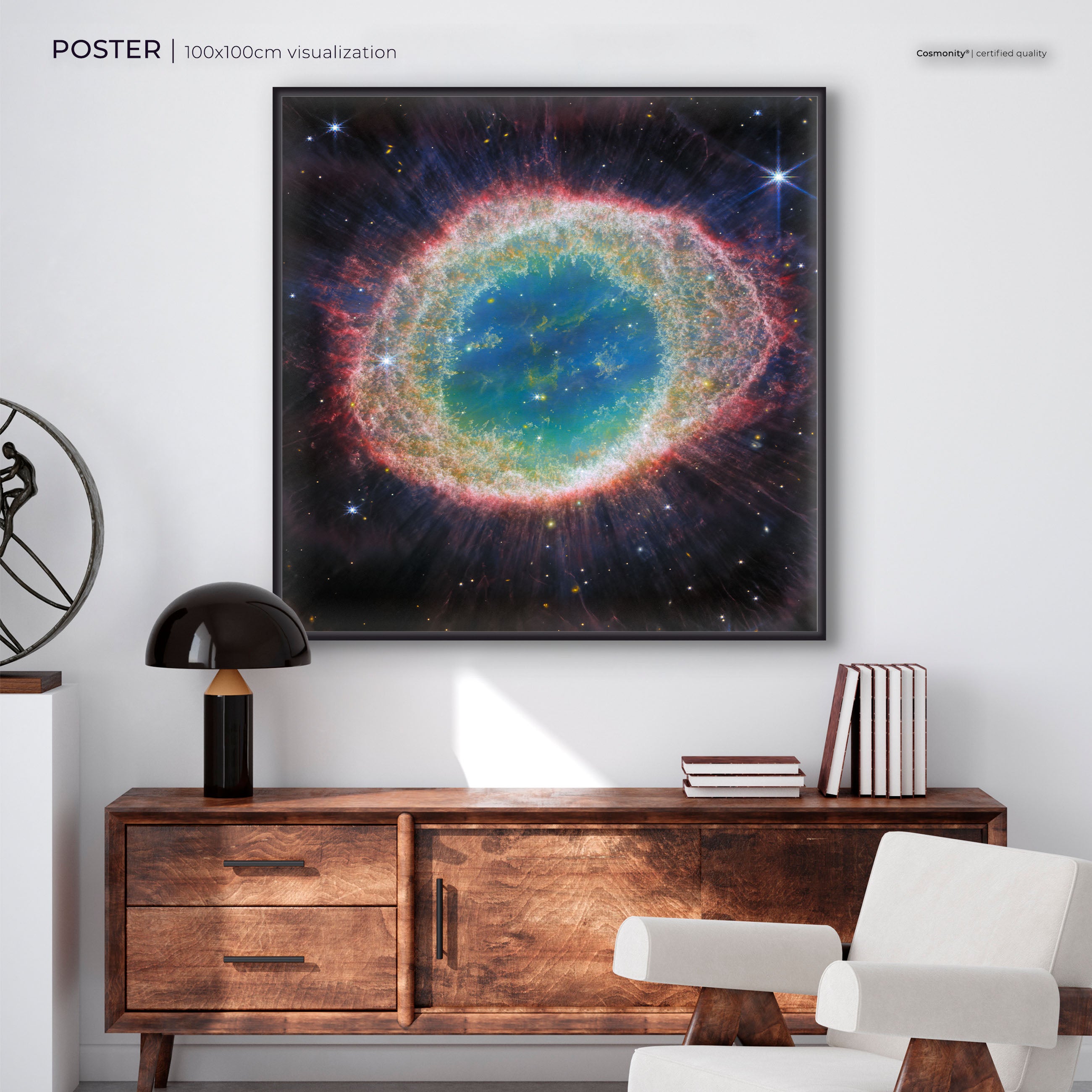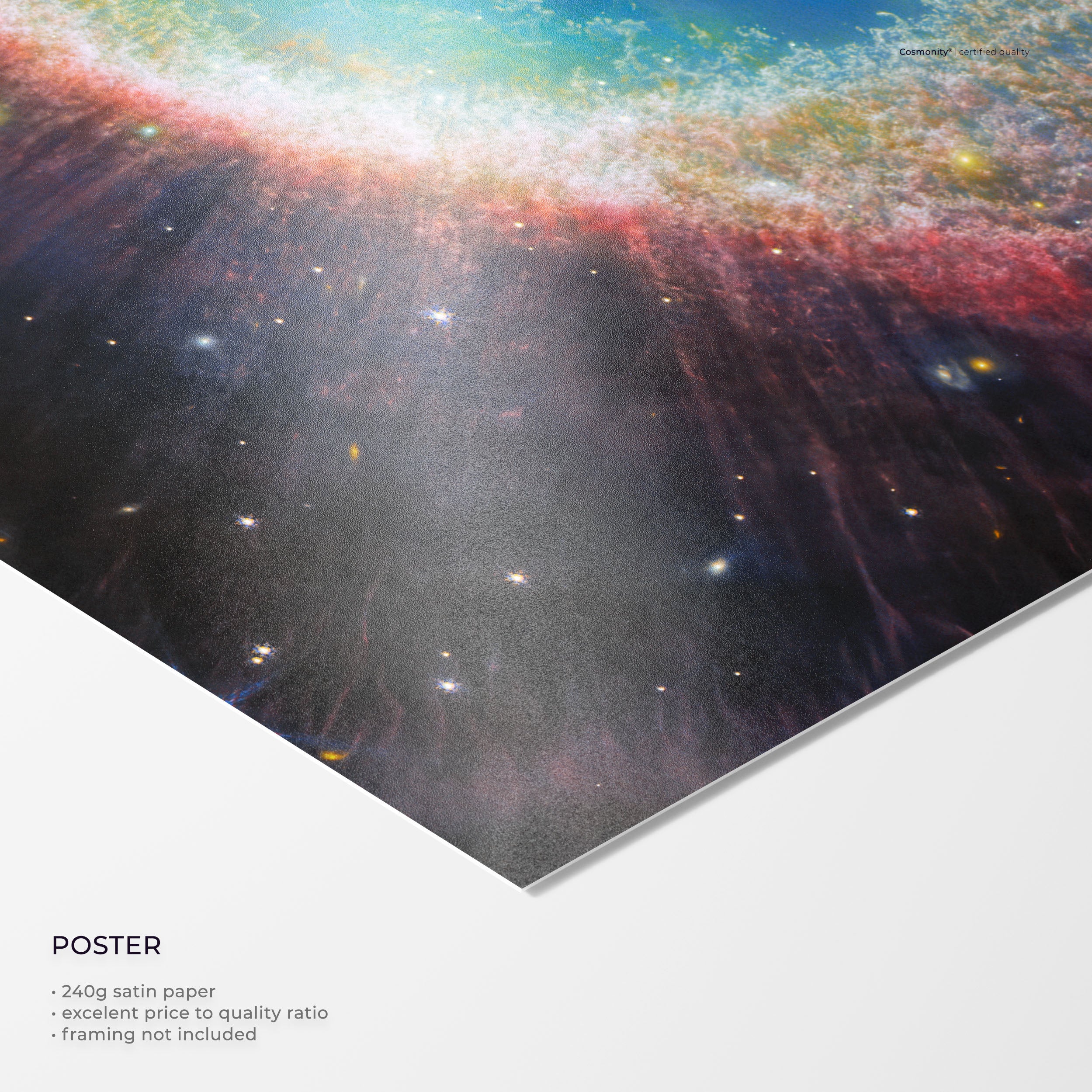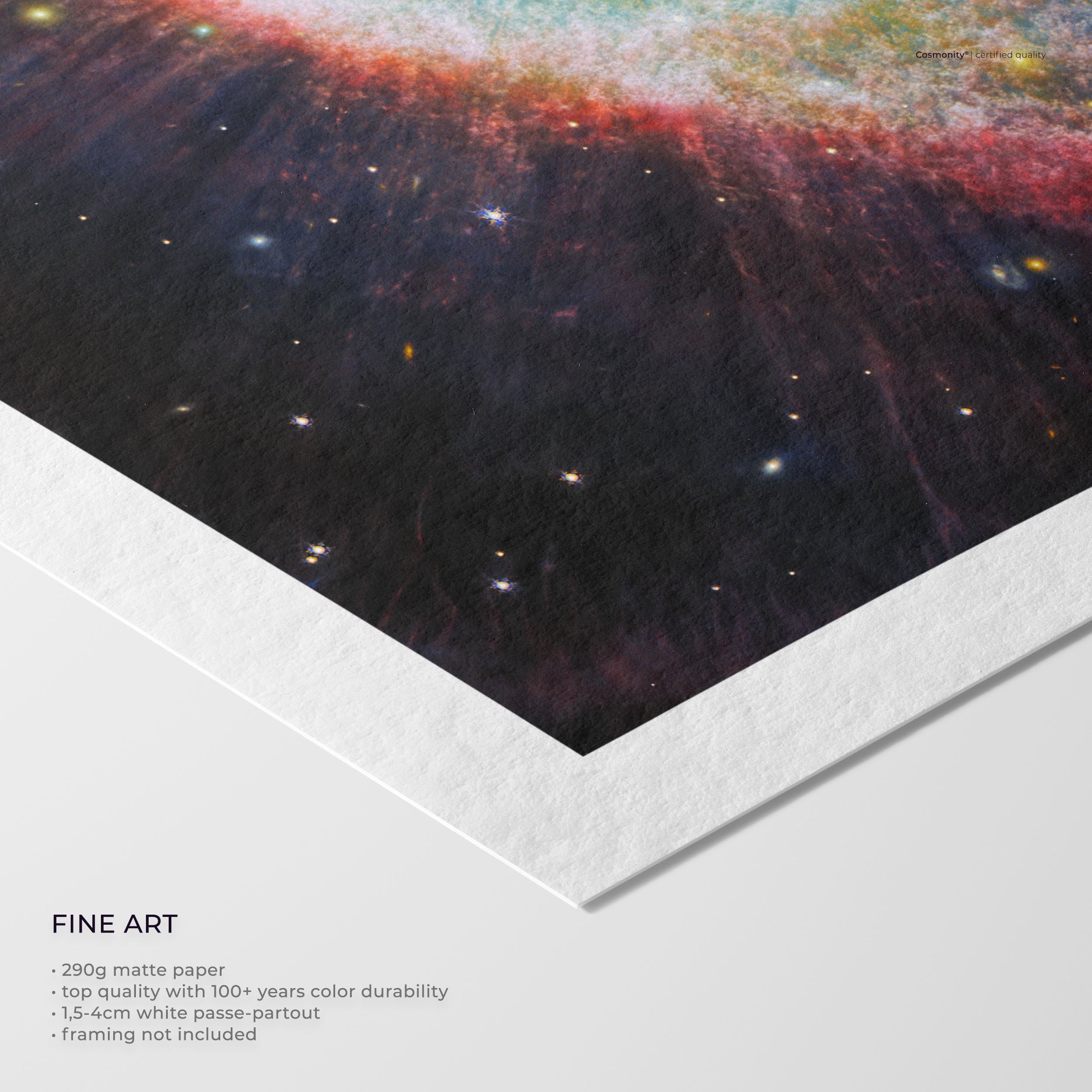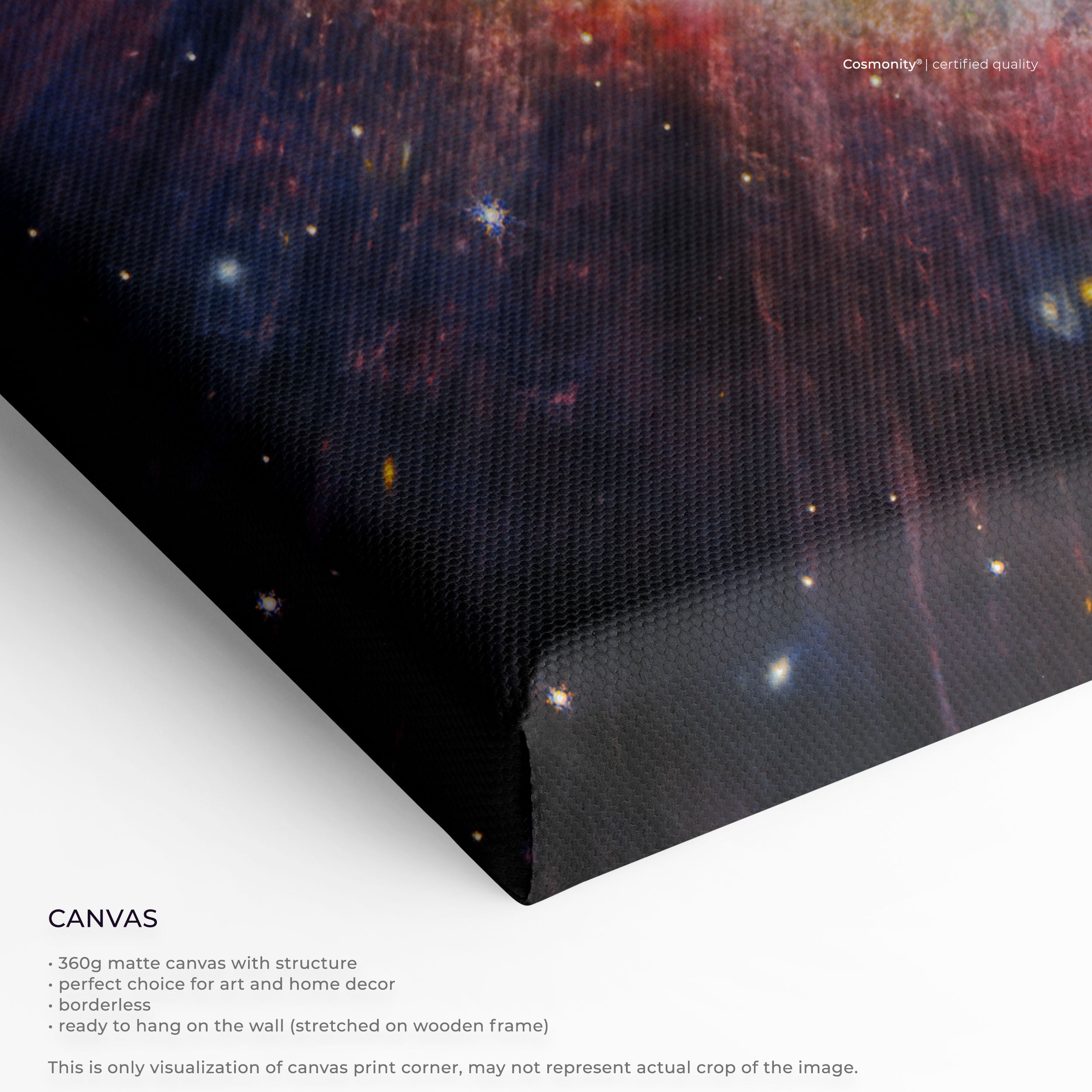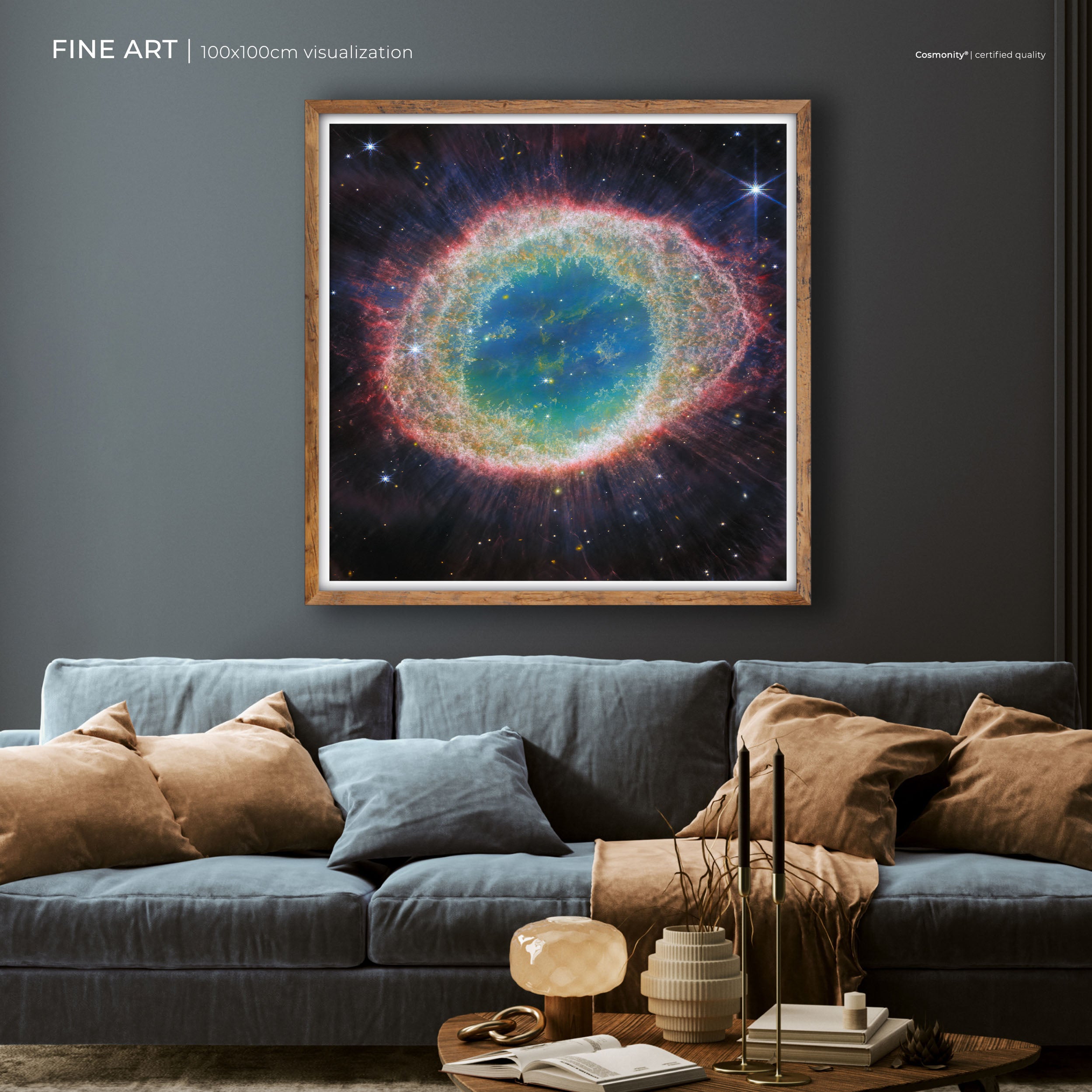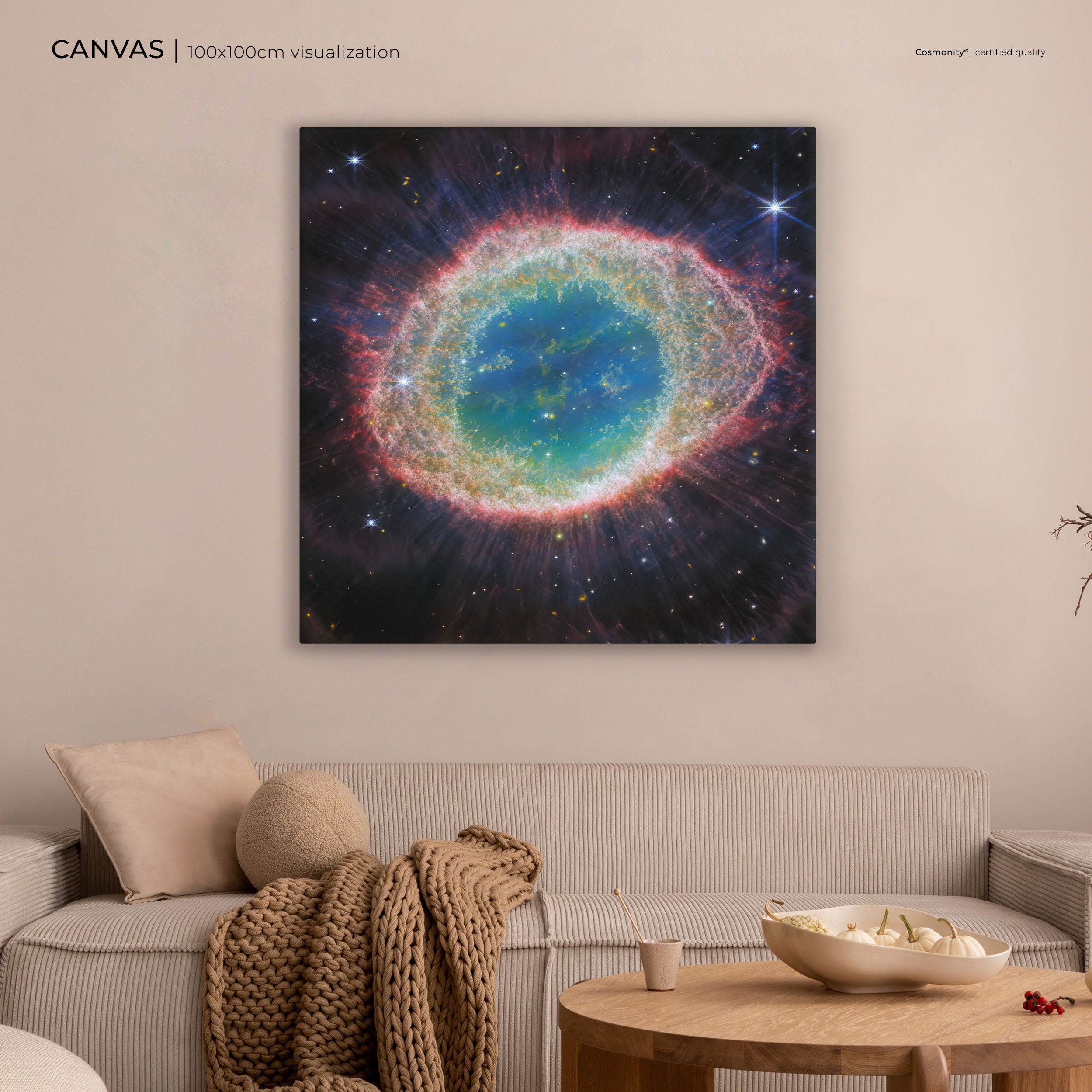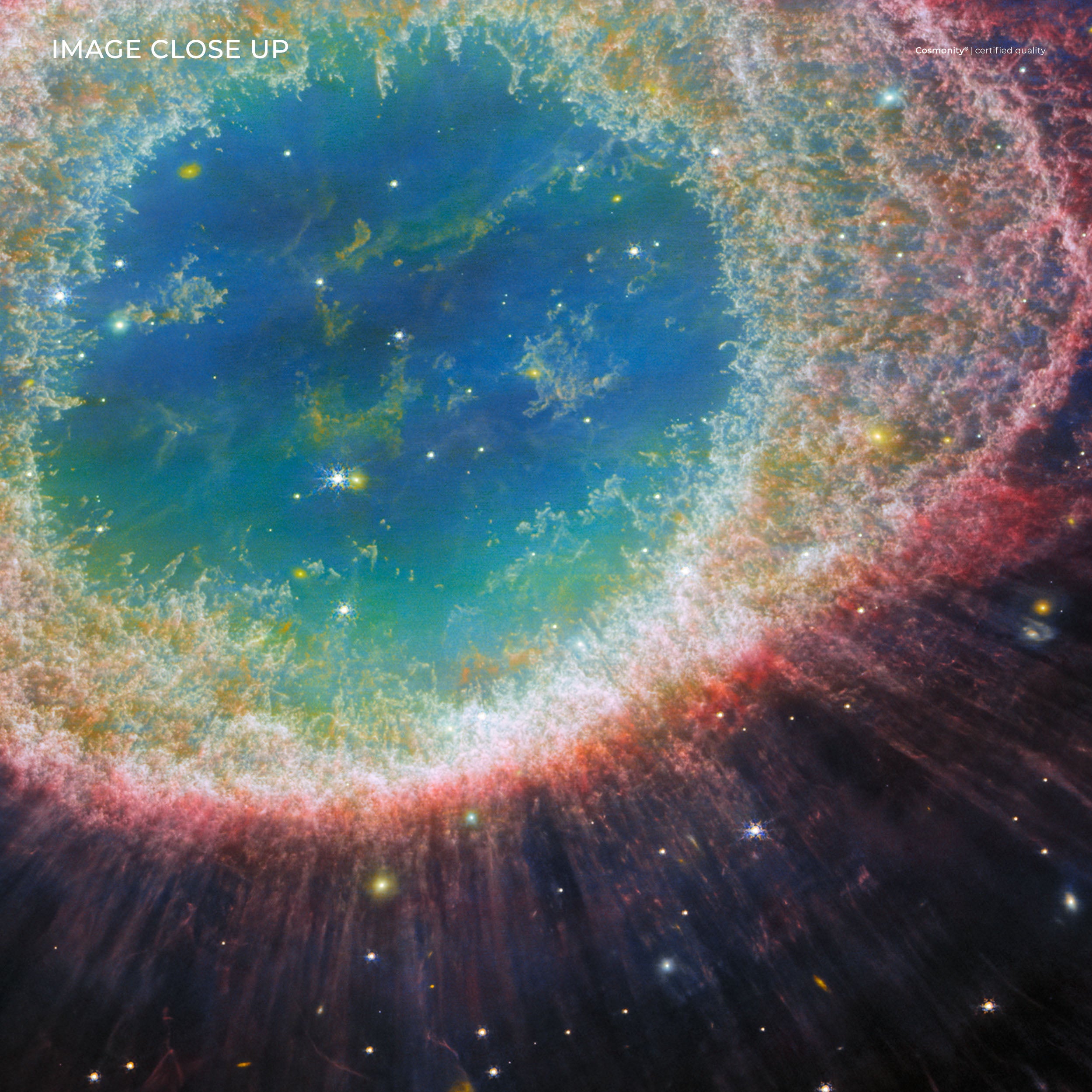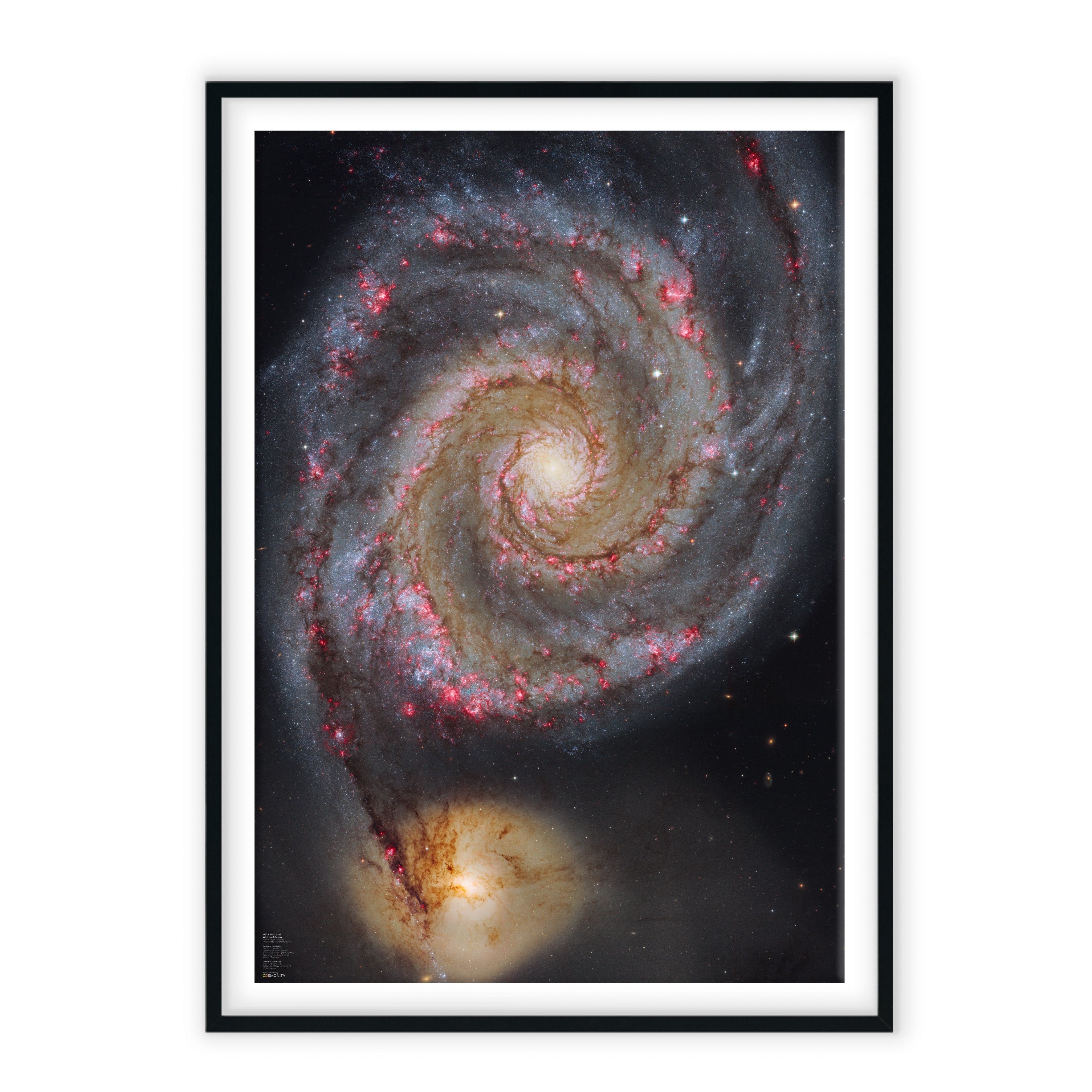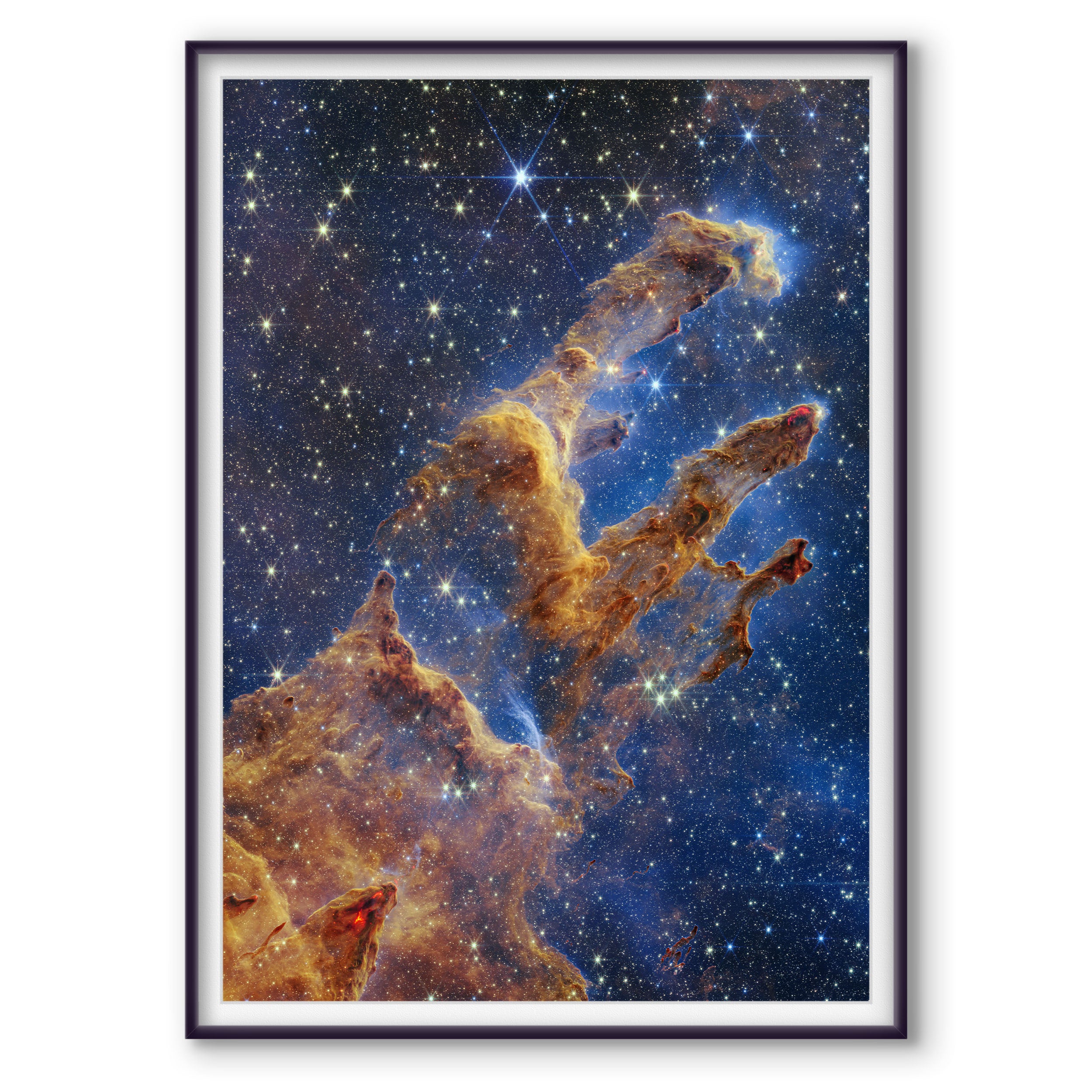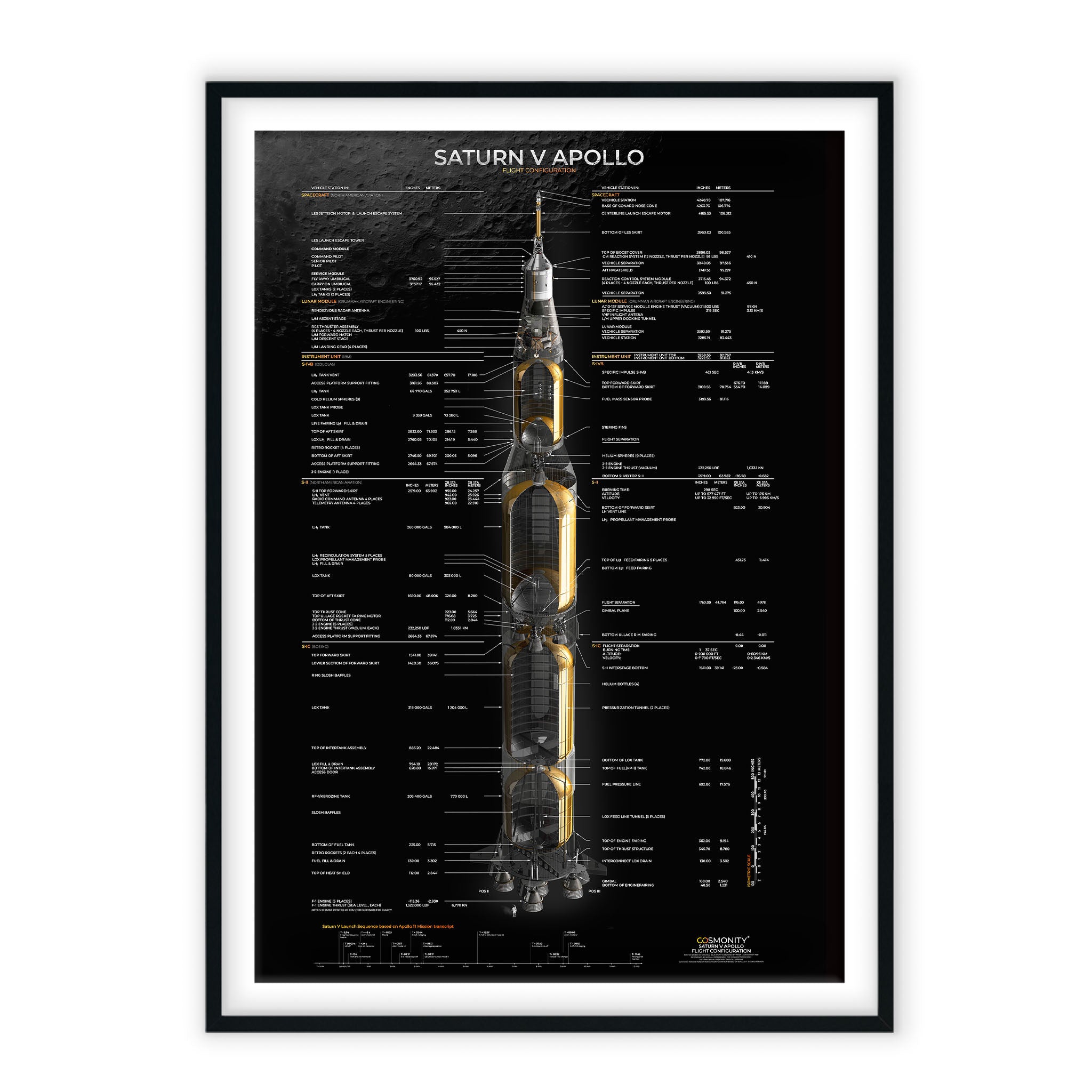Behold the celestial splendor of the Ring Nebula, also known as M57 or NGC 6720, as captured by NASA’s James Webb Space Telescope with unparalleled clarity. This iconic planetary nebula, formed from the dying breaths of a sun-like star shedding its outer layers, sits approximately 2,500 light-years from Earth. It serves as a classic example of the final stages of stellar evolution for stars similar to our own sun.
Webb's NIRCam (Near-Infrared Camera) has peeled back the veil of cosmic dust to reveal the intricate filament structures of the nebula's inner ring with an unprecedented spatial resolution and spectral sensitivity. This dataset highlights some 20,000 dense globules rich in molecular hydrogen and an inner region of extremely hot gas. The primary shell of M57 is adorned with a delicate ring of emission from carbon-rich molecules, known as polycyclic aromatic hydrocarbons (PAHs), which are crucial for understanding cosmic chemistry.
Surrounding the main ring are roughly ten concentric arcs, thought to be the result of a dance between the nebula's central star and a distant, low-mass companion—similar to the distance between Earth and Pluto. These features offer astronomers a window into the past, allowing them to conduct a form of astronomical archaeology to glean insights into the life cycle of the progenitor star.
The Ring Nebula’s image by the James Webb Space Telescope is not just a scientific achievement but also an artistic marvel, making it an exquisite centerpiece for any space aficionado's collection or an inspiring decorative print for those who appreciate the universe's vast beauty.
Image Credits: ESA/Webb, NASA, CSA, M. Barlow (UCL), N. Cox (ACRI-ST), R. Wesson (Cardiff University)










